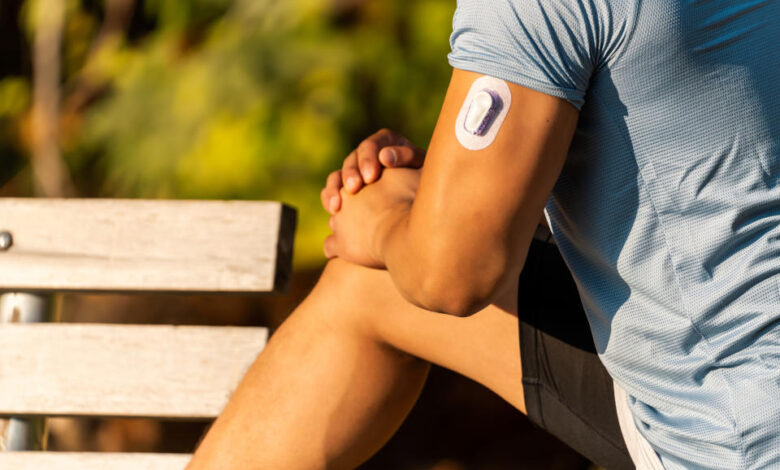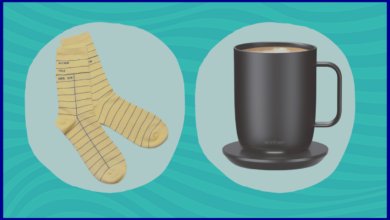The first over-the-counter continuous glucose monitor just got cleared by the FDA

Continuous glucose monitors (CGM) are about to become more accessible, as the Food and Drug Administration announced clearing the first over-the-counter device on March 5. The Dexcom Stelo Glucose Biosensor System will be available this summer and is intended for anyone 18 years and older who does not use insulin. This would include individuals with diabetes using oral medications to treat their condition, as well as people without diabetes who are looking to better understand how diet and exercise may impact blood sugar levels, according to the FDA’s statement. The agency does note that the nonprescription CGM should not be used by people with “problematic hypoglycemia,” also known as low blood sugar, “as the system is not designed to alert the user to this potentially dangerous condition.”
Given the increased access to these monitors and the growing trend of people who don’t have diabetes using them as “personal health devices” to monitor how foods impact their blood sugar levels and to motivate themselves to make healthy behavioral changes, it’s important to understand what a CGM is and who really needs one. Here’s everything you need to know.
🩸 What is a continuous glucose monitor?
It’s a wearable technology that allows you to track blood sugar levels 24 hours a day, without having to prick your finger for a blood test. The device is worn on either the arm or the abdomen, where a small sensor is inserted just under the skin. The sensor measures glucose levels and wirelessly transmits the data to a device, via a downloadable app, for viewing.
🔬 What information does it provide?
CGMs provide continuous information on glucose levels, allowing a user to see what their current numbers are at any moment, while also getting insight into trends, such as foods, physical activities, stressors or illnesses that may cause a spike. The alternative is using a finger-stick blood test, which provides data for only a point in time. “You don’t know if that number is going up or going down or holding steady,” Dr. Michael Natter, an endocrinologist at NYU Langone Health and a type 1 diabetic, tells Yahoo Life. The goal is to keep blood sugars within a certain range, as levels too high or too low can damage organs and lead to potentially life-threatening complications. For diabetics, this often requires management through insulin therapy.
🤷♀️ Who needs to use a CGM?
These devices are made primarily for those living with type 1 or type 2 diabetes who are managing their condition with insulin. However, Dexcom reports that there are approximately 25 million people in the U.S. living with type 2 diabetes who do not use insulin and can still benefit from CGM technology.
According to Cleveland Clinic, the wearable device can provide several benefits, such as:
-
Showing a more complete picture of how blood sugar levels change over time.
-
Pinpointing any patterns in blood sugar changes so physicians can create a personalized plan for patients.
-
Warning about blood sugar that is too high or too low.
-
Reducing the number of finger-stick tests patients need to do, although they may still be required for diabetes management.
Natter points out that there’s also a population of diabetics who haven’t had access to a CGM because of different scenarios where insurance is unwilling to cover the cost of the device. Although the price of the over-the-counter device isn’t yet available, he says that population would “benefit from access to affordable nonprescription” CGMs.
💪 Why would a nondiabetic use it?
These monitors are the latest tool in biohacking — the trending practice of using medical methods to boost physical or mental performance, enhance health and well-being, or reach specific health goals. And while they’ve gained popularity among certain fitness fanatics and wellness gurus, experts have tried to figure out why.
Dr. Robert Shmerling of Harvard Health identified some possible reasons, such as potentially identifying prediabetes, “optimizing” blood sugar for “peak mental or physical performance,” the “illusion” of feeling more in control of their health, and simple curiosity.
However, there’s little research published to solidify any potential benefits of wearing a CGM as a nondiabetic. Some experts, including Natter, are skeptical. “I think there are downsides to having too much data. Because while these continuous glucose monitors are wonderful and relatively accurate, they are not meant to pick up very subtle glucose swings. And when we see a small spike after a meal, that could actually be very normal,” he says. “I fear that might be overinterpreted and misread as pathologic or bad.” Natter says that he’s also wary of foods becoming “demonized” because of resulting blood sugar spikes.
🤔 The main takeaway
While Dr. Jeff Shuren, director of the FDA’s Center for Devices and Radiological Health, tells Yahoo Life that “giving more individuals valuable information about their health, regardless of their access to a doctor or health insurance, is an important step forward in advancing health equity for U.S. patients,” some physicians are hesitant about individuals monitoring their medical data on a nonprescription device.
“It gets a little bit nuanced,” says Natter. “If there’s someone taking medication and monitoring with any device, I think it’s safest to have a medical professional shepherding that patient through.”




